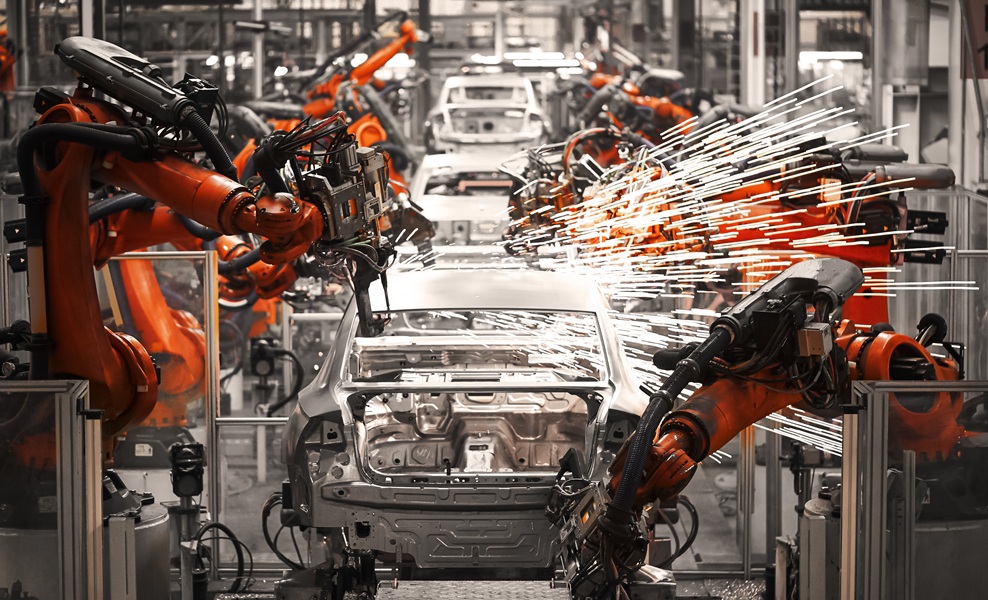Digital transformation in manufacturing is often driven by technology, but its success hinges on empowering people. At ACG’s Global Lighthouse Network facility, the focus on workforce engagement, cultural change, and practical innovation offers a powerful blueprint for Industry 4.0 leadership.
As manufacturers worldwide turn to digital transformation to keep pace with Industry 4.0, many overlook the most essential element: people. At ACG World, a global leader in pharmaceutical manufacturing, Chief Digital Officer Balajikasiram Sundararajan stresses that digital transformation cannot succeed without a foundation rooted in people-centric approaches. Reflecting on ACG’s Pithampur, India facility, the first capsule manufacturing site to join the World Economic Forum’s Global Lighthouse Network (GLN), Sundararajan explains that ACG’s journey hinged on empowering its workforce and building a culture that embraces technology as a catalyst for growth and improvement.
“The role of people in digital transformation cannot be overstated,” Sundararajan says. “You may have the most advanced AI, digital twins, or IIoT systems in place, but if the people using them are not engaged, informed, and empowered, the impact of that technology will always be limited. At ACG, we understood early on that the people make the transformation successful, not the technology itself.”
A shared journey and vision
The commitment to fostering this culture led ACG to introduce a transformative mindset among employees, emphasising collaboration and shared ownership of the journey. “We wanted our team to move from a perspective of ‘I know my job; do not interfere’ to one of excitement and shared purpose,” he explains. “To do this, we made it clear that the transformation was not imposed from above but a journey to which every team member could actively contribute. We encouraged them to see technology as an enabler rather than a threat, which helped lay the groundwork for a smoother, more engaged transition.”
For Sundararajan, aligning digital transformation with ACG’s broader vision was critical in building a robust business case that resonated across all levels of the organisation. “Our objective with the Pithampur transformation was clear from day one,” he says. “We wanted to use digital technology not just to enhance our processes but to truly transform them in a way that aligns with ACG’s core values and the principles upheld by the Global Lighthouse Network. By framing our goals in a way that connected to ACG’s identity and mission, we ensured that every team member felt a part of this larger vision.”
This vision extended into practical applications across the factory, where ACG’s digital initiatives brought measurable improvements. Sundararajan highlights the development of real-world use cases as a central element in making transformation tangible and impactful. “Creating use cases allowed us to show our workforce exactly how digital tools could directly benefit their work,” he explains. “We implemented dynamic production planning with digital twins and real-time quality control using IIoT. These applications were not just theoretical improvements; they made a real difference in daily operations, helping our teams see the value of digital solutions very practically.”
Empowering the workforce to explore
One of ACG’s most transformative steps involved empowering the workforce to explore and experiment with emerging technologies. “We organised digital innovation days where employees could work hands-on with new tools,” Sundararajan recalls. “This was not about forcing technology on them; it was about giving them the freedom to explore, make mistakes, and discover the potential of these tools on their own. We wanted our team to feel that they had ownership of this transformation and were not merely passengers on this journey but drivers of it.”
This approach led to the creation of ACG Nemo, an intelligent operator assistant trained on ACG’s operational protocols, which has since become a key asset in daily operations. “Nemo is a practical example of how we have integrated technology with the human element,” Sundararajan continues. “By providing answers to specific queries based on our SOPs, Nemo has become an invaluable tool for maintenance engineers. It has helped us boost productivity, reduce mean time to repair, and significantly decrease critical defects. This is not just about technology working in isolation; it is about technology working alongside our people to enhance their capabilities.”
ACG’s journey also underscored the importance of transparent communication throughout the transformation process. “From the beginning, we prioritised clear communication to ensure that our teams understood not just what we were doing but why we were doing it,” Sundararajan emphasises. “Maintaining an open dialogue allowed us to keep our people informed of the project’s progress, challenges, and key milestones. This transparency was essential in building trust and keeping everyone aligned with the transformation goals.”
Applying the lessons learned
Looking ahead, ACG is taking insights from its Pithampur transformation and applying them to its broader ‘Build the Future’ strategy, which spans multiple facilities worldwide. Sundararajan reflects on the importance of maintaining a strategic focus amidst the rapid pace of technological change. “With new digital solutions emerging constantly, it is tempting to jump on every new trend,” he says. “But we have learned that ensuring each technology aligns with our overarching vision and core objectives is essential. At ACG, we are looking not just at the immediate benefits of these innovations but at how they contribute to long-term goals like sustainability and operational excellence.”
The potential of technologies such as AI, digital twins, and automation is vast, but Sundararajan cautions against pursuing them for their own sake. “Technology should serve our purpose, not the other way around,” he insists. “The next phase involves exploring how these innovations can further enhance our commitment to creating sustainable ‘lights-out’ factories that operate autonomously. We are also working toward achieving sustainability lighthouse certification, aiming to replicate and refine the success we have seen at Pithampur across all our facilities.”
ACG’s transformation journey underscores a critical truth in the age of Industry 4.0: digital transformation begins and ends with people. For companies embarking on similar paths, Sundararajan’s advice is clear. “Put people at the centre of your strategy, communicate openly, and let technology be the tool that empowers them, not the other way around. Transformation is a shared journey; only when people feel part of it can technology’s true potential be realised.”






